Zesto Audio - Andros Spirit Vacuum Tube Phono Preamplfier
Dave McNair eats Greek food as he reviews an entry level tube phono pre from Zesto Audio
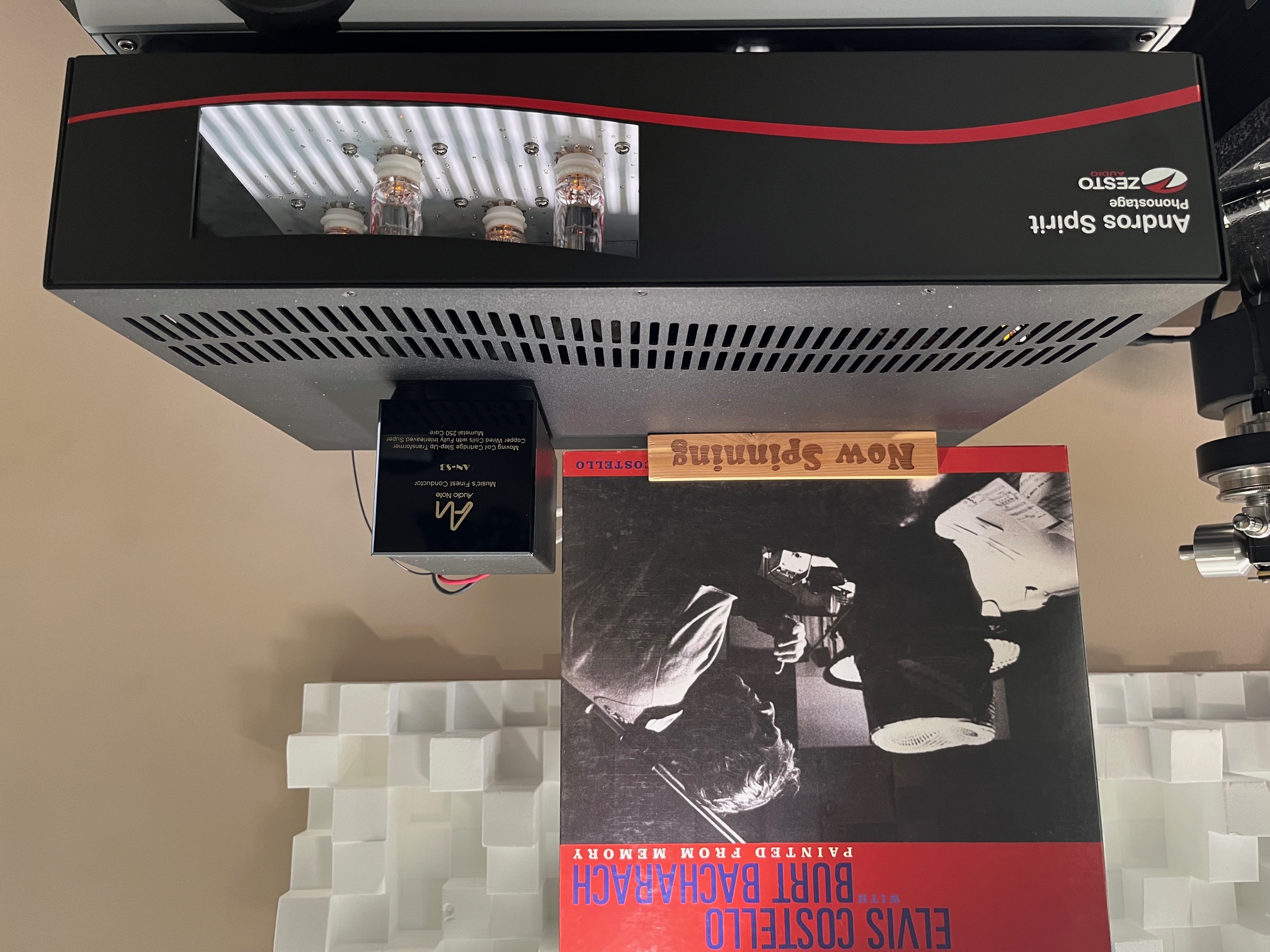
High-end audio has a rich history of husband-and-wife teams. In the case of Zesto Audio, head honcho George Counnas designs the circuitry, and his wife Carolyn creates the line's distinctive, unmistakably artsy, curvaceous looks. She also does Zesto's marketing.
George’s back story includes being part of a research and development team designing airborne navigational systems for the Royal Air Force and later as a recording engineer, musician, and producer. My man. Somewhere along the way, he must have become an audiophile. All Zesto products are vacuum-tube-based designs.
The Zesto Audio Eros 500 Select is Mr. Counnas’s all-out assault on a high-power tube power amp. Along with its less powerful brother, the Bia 200 Select, it has received much praise from audiophiles and the review community. I haven’t had the pleasure of hearing them, but when he reached out to me about a review of his latest entry-level phono stage, I couldn’t resist.
Can I Get A Side Order Of Spanakopita With My Tubes?
Andros is the name of the Greek island and the home of George’s grandmother’s family. It’s also the name for the family of the four levels of phono stages in the Zesto line. The Andros Téssera Reference at $19,900 is the flagship, Andros II and an upgraded Andros II Deluxe version at $5,900 and $8,300, respectively, with the Andros Spirit at the entry-level for $2,997 with MM input or $3,997 with optional MC input. An all-tube phono stage at that price is pretty rare. Well, at least one that sounds great!
Upon receiving the Andros Spirit and admiring its simple yet pleasing appearance, I hooked it up for a spin. Hmmm. It was a little dark and murky, but I figured it needed some time to open up. Over a few weeks, I hooked up a lot of other components to audition but returned frequently to the Andros Spirit. Each time, it sounded different, and then finally, there was a large gain mismatch between channels. Luckily, I had a set of smooth plate Telefunken 12AX7s that I popped in.
Ok, now we're cookin’ with gas. Of course, I informed George Counnas, and he sent me a new set of JJ ECC83 tubes. My experience with JJ small bottle tubes in the mastering gear I use at my studio has been mixed. They usually sound good but depending on the circuit used, they frequently don’t last as long as I’d like. I’ll relate my experience with the Telefunkens, then return to the factory-equipped JJs. As a side note, there is a 6-month warranty from Zesto on the factory-installed JJs, so no worries there.
In Use
.jpg)
The RCA in and out connections are on the rear panel. There is a gain switch for setting MM or MC. The moving magnet switch enables 44db of gain and 64db for moving coil cartridges. The MM setting is fixed at 47 Kohm resistance and 200 pf capacitance. The high-gain MC setting has a choice of 100, 250, or 500 ohms for loading. One clever thing I experienced when opening the chassis to change tubes is a switch mounted on the rear panel that opens to kill the power supply connection when the chassis cover is off and NOT pressing on it. That’s a nice safety feature for folks too cavalier to turn off the power when dealing with a tube change or poking around inside. This is a safety feature copied from the old Telefunken radios. The unit must be turned off or it will blow the fuse if it is operated with the top off.
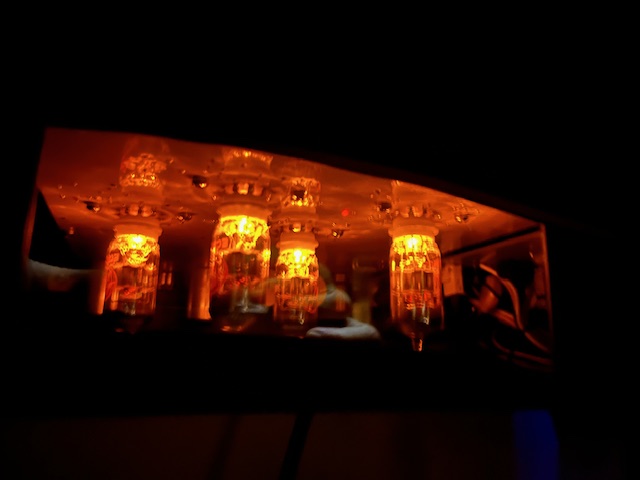
And who doesn’t love seeing the glow of the four tubes from the front panel window? And why does seeing the tubes in a piece of gear always make it sound better? Why do I usually think fat cables with exotic connectors sound better, or does my system make music sound better when the room lights are off? Human perception is a funny thing.
With the Telefunken 12AX7s fitted, every time I powered the Andros Spirit up and sat down to enjoy vinyl, it never failed to please. The vintage tube midrange luxuriousness was in full effect. Vinyl was engaging, enveloping, and oh so dang musical. Of course, I would inevitably swap phono preamps, usually an Audio Research Ref 6SE. Only then could I hear exactly what areas of performance had been compromised to land an all-tube phono pre for $3,997.
"every time I powered the Andros Spirit up and sat down to enjoy vinyl, it never failed to please"
I discovered that the Teles in the Andros Spirit had a tonality similar to the Ref 6SE, but the frequency extremes sounded rolled off. Not severely, mind you, but a subtle loss of detail and resolution more than a simple roll-off. Having experience with vintage tubes sometimes producing this kind of result in a circuit, I was curious to see how the JJ ECC83s would fare.
After a new set of JJs arrived from George, I swapped tubes and set the system up for a new round of listening tests. Maybe the sound got even better after some hours on the new tubes, but from the get-go, I was mighty impressed by the new set of JJs.
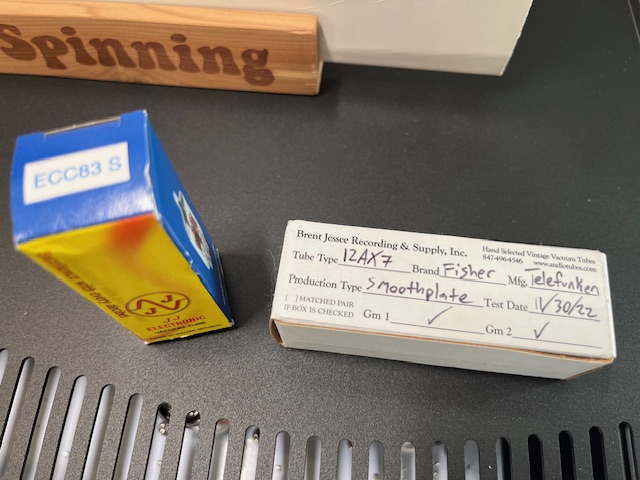
Now, the sound was more vivid and dynamic. There was more juice at the frequency extremes. The low-mid-upper-bass region was clearer and had less body than with the Telefunkens, but it was not a deal breaker for me. The increased sense of detail and dynamic contrast were more than welcome. Certainly, I enjoyed listening to tunes before, but now the sound was inching towards exceptional. Before I go further, the system during this period included my TW Acustic Raven LS turntable and arms. I mainly used a Charisma Audio YYZ MC cart. An Audio Research REF 6SE line preamp, Ref 3SE phono, with power to the Acora VRC loudspeakers provided by an Audio Research Ref 80S. The racks are Acora Acoustics black granite—all cabling Cardas Audio Clear Beyond, including tonearm cable. The power cords were Sain Lines and Cardas Audio. An ADD Powr-Sorcer X-4 provides harmonic energizing voodoo.
Sounds
I found it interesting that while imaging was sufficiently wide, with good front-to-back information, it didn’t have as much dimensionality as what I’m used to hearing with either my VAC Master Preamp phono stage or the ARC Ref 6SE on loan. But then there is a little thing known as price differential. To address this discrepancy, I also compared the Zesto Andros Spirit to a LAB 12 - Melto 2, which is also tubed and, last I checked, goes for $4,490. Since Lab 12 components are made in Greece, I guess I wanted to see whose moussaka I liked more.
I played Zero 7's debut album, Simple Things. This chill, downtempo, trip-hop classic from 2001 told me all I needed to know about why I liked the Andros Spirit so much. After all of side one through the Andros Spirit, next came a warmed-up Melto 2.
The presentations couldn't have been more different. The Melto 2 was subjectively more detailed and textural. But the texture was of a grainy, odd-harmonic nature. Back to Simple Things, Sophie Barker’s seductive vocal on their UK hit, “Destiny,” was no longer inviting nor as emotional. It’s funny how a slightly different eq curve and different amounts and types of distortion, even at a subtle level, can completely alter my perception of a singer’s intent on a song. The top end that the Lab 12 phono preamp brought to the party didn’t have the lean-in and come-hither attitude the Andros Spirit delivered. I love my detail, but it has to be classy to keep my attention or, rather, NOT draw my attention to it.
Returning to the Andros Spirit brought a big sonic relief to my head, and I had to play Destiny one more time. The Andros Spirit has soul, no doubt about it. I was back in my “Light another stick of Nag for us, would ya?” state of mind.
One day, for fun, I tried a $4,525 SUT from Audio Note driving the MM input of the Andros Spirit. I had the SUT, a pair of A.N. RCA cables, and an Audio Note preamp in for review, so I thought, why not? Wow. Suddenly, it was like the fun, extroverted people had just arrived at the party. Very nice. Classy and expensive-sounding.
Another important record I played was the classic fusion motherlode, Billy Cobham - Spectrum. It's one of my all-time favorites of any genre. I played this on 8 Track tape on the tape deck in my 1972 Triumph TR-6, and it fit right in with Clapton, Foghat, Kansas, Journey (pre-hits, mind you), and all my other 19-year-old favs. I have to believe (even with no proof) that Alex Van Halen lifted the groove on Spectrum’s - “Quadrant 4” for Van Halen's “Hot For Teacher.” What wise musician said “Only steal from the best”? Spectrum is the recording that got me into jazz, along with Return To Forever and Miles, and will always be close to my heart. And if playing “Red Barron” doesn't make you wanna shake your pygē, I feel sorry for you.
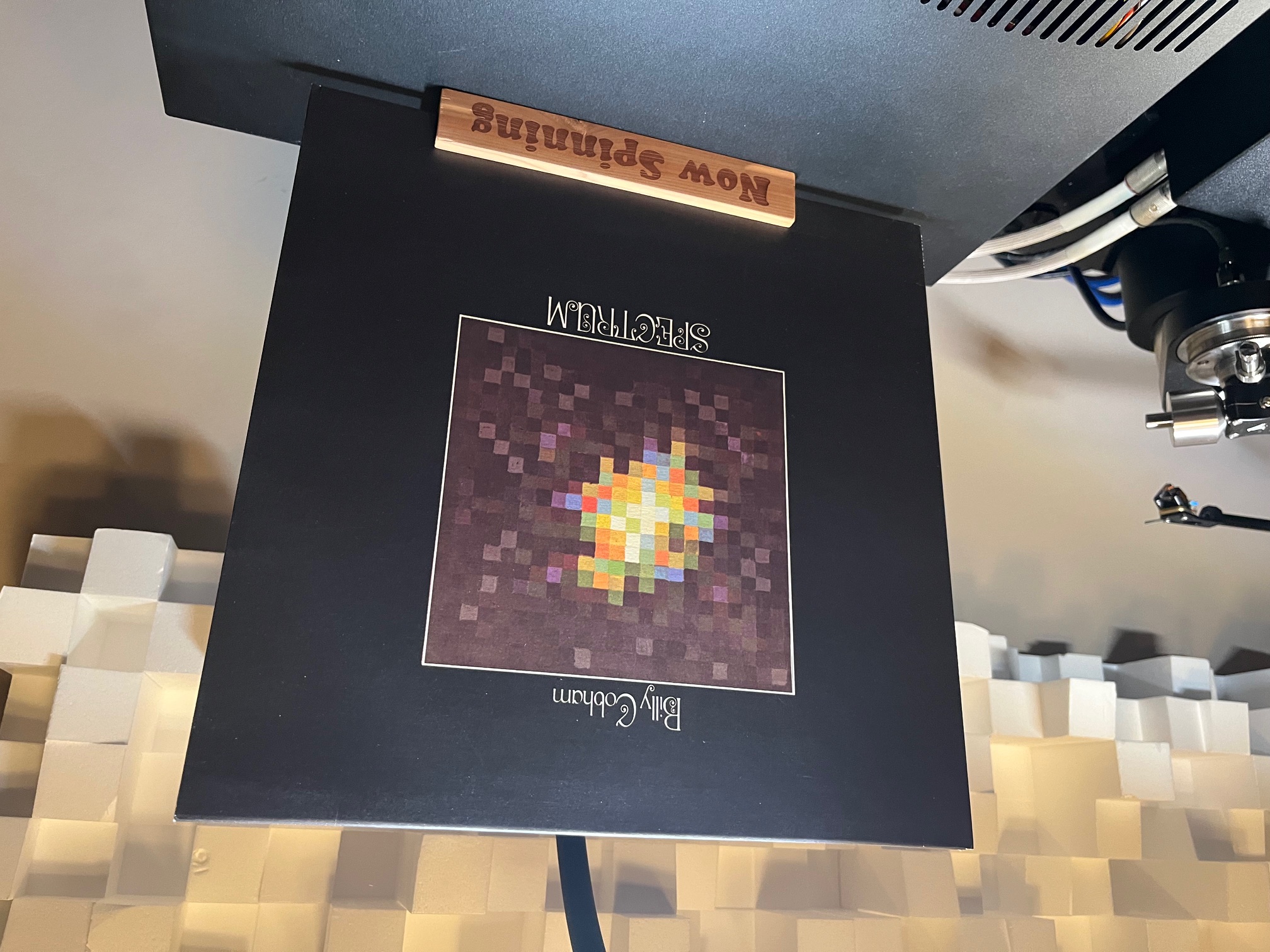
As usual, I started with the warmed-up Andros Spirit and sat down for side one. Dayum. It had been a minute since I listened to this one, and it did not disappoint. On certain cuts, however, the cymbals can be downright overbearing - but here’s the thing: so are real cymbals!
Side note: Cobham's fearless bashing is recorded very cleanly here by the legend Ken Scott. I had a very enjoyable dinner with him many years ago, and he joyfully answered all my recording questions, from The Beatles to David Bowie—a true giant and a gentleman.
So now we are in the ole’ audiophile quandary of being faithful to the recording or having greater listenability. The same system attributes that can make a harpsichord or a 12-string acoustic guitar sound so palpable will also put a Billy Cobham cymbal crash in yo cranial face, just like you were in a practice space or recording studio or small club sitting 8 feet from his kit. So what’s it gonna be?
I was curious to witness how the bashing would come off when voiced through the Andros Spirit. It turns out that I was very aware of those tunes where Mr. Cobham leaned in on the metal, and I was still all in. And I cranked it. The crashes still had a drummer's right-to-make-bold-sonic-statements attitude, but now it was a little more glued to the whole kit and more friendly sounding to the mix than I remembered from my memory of past systems. Everything was crisp and clean and slammin’ yet not offputting.
When swapping to the Ref 6SE, things were clearer, faster, more dynamic, wider, deeper, and far more annoying on those cymbal crashes. More real? Probably. I’m not blaming any kind of distortion on the part of the Ref 6SE, I’m just saying that an even more faithful rendering of those cymbals, may not be what I wanna hear for this recording. No, I’m not gonna switch phono preamps for different records, but I can tell you this: if I had the Andros Spirit around more than the review period, I’d be tempted to.
Next up was the gorgeous Bill Evans classic Waltz for Debby. A pal loaned me his Acoustic Sounds 45 RPM reissue to compare to my Wax Time copy, a fine, clean, quiet pressing that I always thought sounded amazing (no doubt cut from a CD_ed). I know nothing about the provenance and personnel on this version and confess I should dig into it.
The Andros Spirit is the epitome of gear that delivers a mind-meld-with-the-music type of experience, and that was no different with Waltz for Debby.
The Andros Spirit also clearly revealed the differences between each version. I noticed one unexplainable thing: more tape hiss was noticeable on the AS 45 rpm version compared to my Wax Time 33 RPM. Yet the AS version was only marginally cleaner and more detailed on top than the Wax Time—another mystery I need to get intel on. In any event, I thought the AS version sounded amazing, especially Scott LaFaro’s bass, and I now consider it to be the definitive version. I’m not sure I’ll drop the coin for it, but maybe. My takeaway is both versions sound great, mainly because the music, the performances, and the recording are so great.
Wrap Up
As I mentioned, each time I played the Andros Spirit first, I couldn't help but sink into and vibe with whatever record I put on. Occasionally, I had a quick flash of thought, such as 'I remember the vocal jumping out a bit more here,' or 'I’m not feeling 30 hz like I usually do.' However, more often, the Zesto Andros Spirit found a place in my head and heart that defied deconstructing its pluses and minuses. I have NOT had this happen with some very expensive gear, much less an entry-level priced, all vacuum tube phono pre.
Were my expectations lowered based on the Andros Spirit price tag? Maybe, but honestly, I made some stiff comparisons with the best of the best in phono pres, and the humble Andros Spirit never came out sounding like week-old dolmades. Yes, it has some sonic limitations, but I feel those are minimal compared to an overriding sense of musical rightness and good ole’ fun that it gave to vinyl playback. And you’ll have some cash left to buy more records. Even if you have a phono pre you're happy with, set up an audition to hear an Andros Spirit. You won't regret one minute of it. Highly recommended.
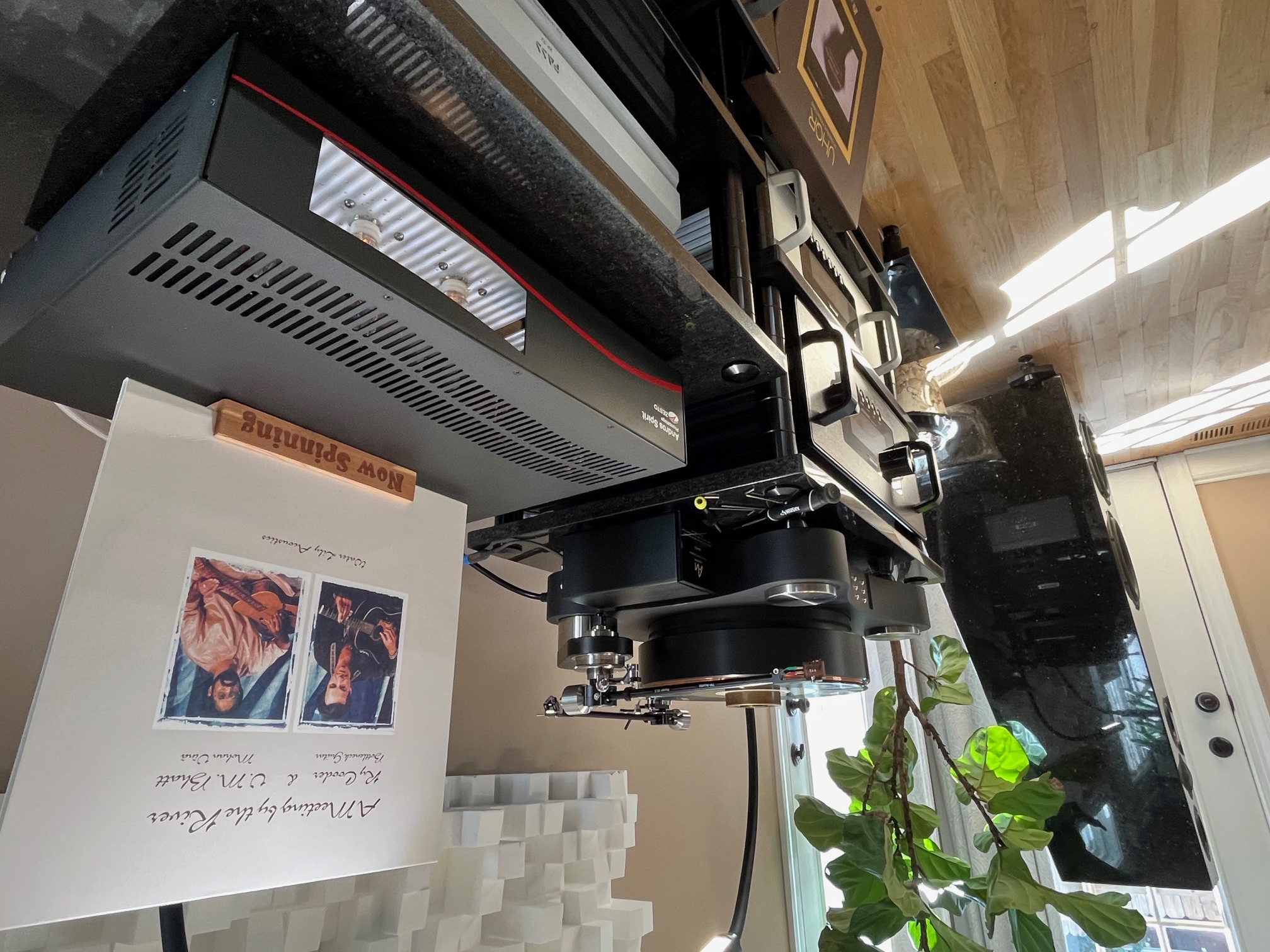
Specifications
Specifications:
Inputs per channel
One input for MM or MC
MM/MC switch
MM impedance switch 47K Ohms
MM capacitance 200pf
MC single-ended RCA input
3 position MC load impedance adjustable 500, 250, 100 Ohms
MC Internal step-up transformers
Ground binding post
Outputs per channel
Impedance 10K ohms
+7 Volts max output level
Active Components
Four standard JJ ECC83S/12AX7 vacuum tubes with high-quality gold pin ceramic sockets
Power
Internal power supplies using Toroidal transformers, 1 high voltage 300V, and 1 low voltage 12V
Power consumption 26.5W, 0 drain when off
Voltage 100V to 120V AC 60Hz
Optional factory installed 220V to 240V AC 50/60Hz
Standard 3-pin 10 Amp IEC power connector
ON/OFF power switch located on the IEC mains power connector
0.5 Amp Slow Blow fuse is located in the IEC mains power connector
Detailed Specifications
Gain MM input 44dB
Gain MC input 64dB
Noise – 65dBv below max output level
Frequency response complies with the original RIAA curve within + or- 0.5 dB
RIAA curve is achieved using a passive filter
1% metal film resistors throughout
Polypropylene capacitors throughout the audio path
Other Features
“Made in the USA” using US and imported parts
Each unit is built by hand
50-hour factory burn-in on all circuits and vacuum tubes
Dimensions 17″ W X 12″ D X 3.5″ H
Weight 14.5 lbs.
16 gauge zinc plated steel enclosure
Two-year limited warranty
Six months warranty on Vacuum Tubes
Manufacturer Information
Shipping Address:
Zesto Audio
3138 Calle Estepa
Thousand Oaks, California, 91360 USA.
Contact Sales and Marketing:
Carolyn carolyn@zestoaudio.com
Phone: 805-807-1841
Engineering:
George george@zestoaudio.com
Phone: 805-807-1840


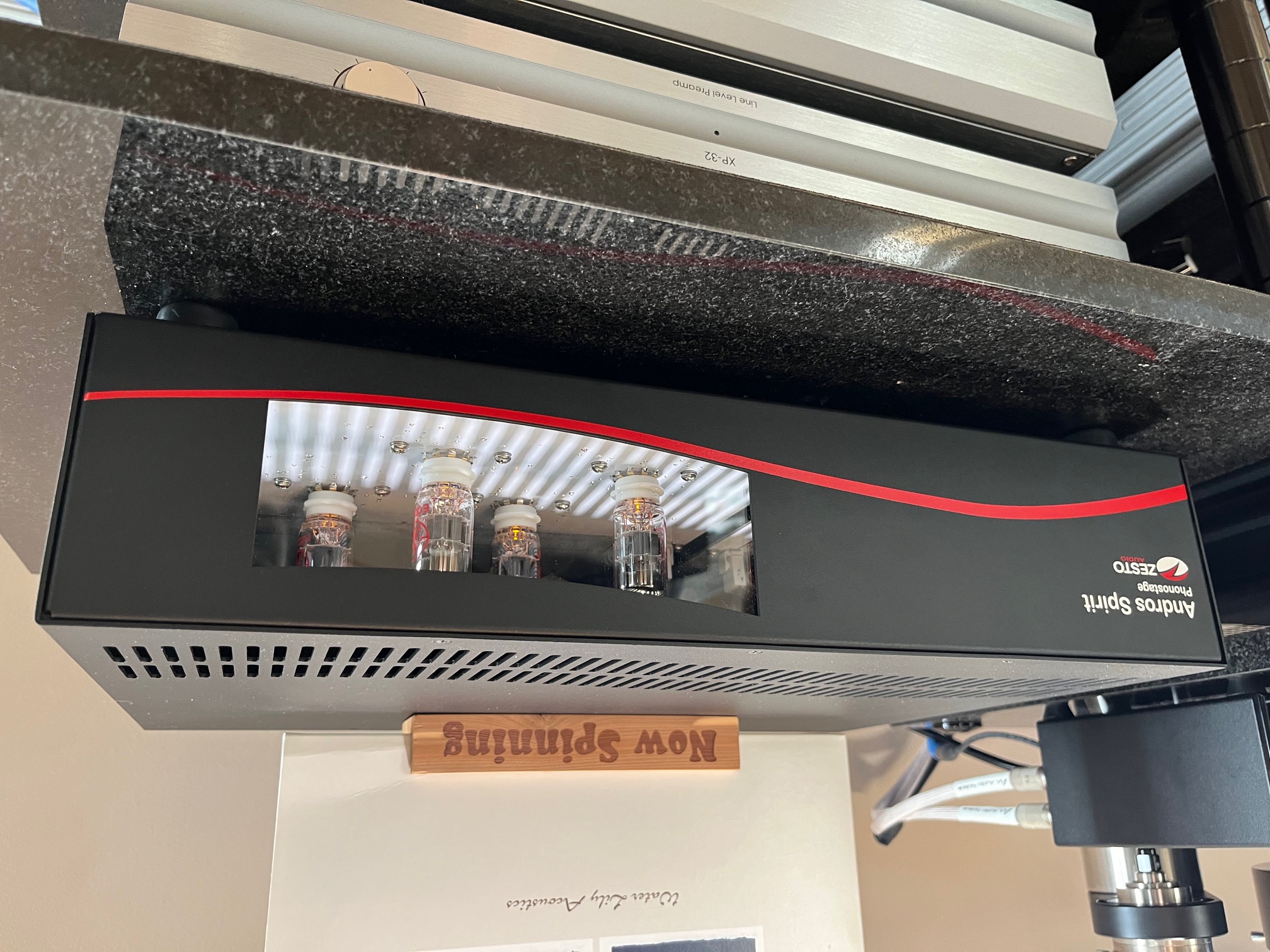






































.png)








